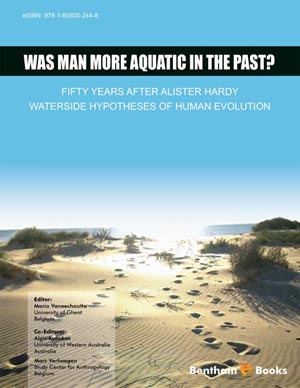Abstract
This paper gives an overview of the beginnings and the scientific acceptance of the so-called aquatic ape hypothesis of human evolution (AAH), especially the work of Alister Hardy and Elaine Morgan. In 1960, marine biologist Sir Alister Hardy, in a notorious article in The New Scientist, entitled Was Man more aquatic in the past?, suggested that “a branch of the primitive ape-stock was forced by competition from life in the trees to feed on the sea shores, and to hunt for food, shell fish, sea urchins, etc., in the shallow waters off the coast … ”, and that “these semiaquatic creatures were soon wading into deeper water, and eventually began to swim and dive for food at even greater depths.” [1]. His hypothesis was based on observations such as human swimming and diving skills, our furlessness and subcutaneous fat tissues, and our streamlined shape “compared with the clumsy form of the ape.” Hardy's littoral hypothesis was brought into the attention of the great public by the books and papers of tv writer Elaine Morgan, beginning with her bestseller The descent of woman [2], and followed by The aquatic ape [3], The scars of evolution [4] and The aquatic ape hypothesis [5], in which she discussed the waterside theory in much greater detail, e.g., with regard to the origin of human bipedality and laryngeal descent and in which she made comparisons to the fossil swamp ape Oreopithecus and to living animals such as the mangrove-dwelling proboscis monkeys (Nasalis larvatus) and the arguably ex-aquatic elephants. This paper further discusses relevant work of Desmond Morris and Christian de Muizon, as well as diverse reactions of palaeo-anthropologists, such as professor Phillip Tobias's dismissal of the savannah hypothesis.
Keywords: Aquatic ape hypothesis (AAH), Alister Hardy, Desmond Morris, Elaine Morgan, littoral hypothesis, Oreopithecus, palaeo-anthropological reactions, Thalassocnus














